
Related
Guests
- Rebecca Solnitwriter, historian and activist. She is the author of over a dozen books, including, most recently, Men Explain Things to Me. She is also a contributing editor at Harper’s Magazine. Her most recent piece for The Guardian is headlined “Death by gentrification: the killing that shamed San Francisco.” She’s lived in the Bay Area for 50 years, 36 of them in San Francisco.
- Adriana Camarenawriter and community advocate based in San Francisco. She attended the officers’ trial over the killing of Alex Nieto and is co-founder of the Justice for Alex Nieto Coalition.
We look at the case of Alex Nieto, a 28-year-old Latino man fatally shot by San Francisco police in March 2014. The police officers accused in the killing claimed that Nieto pointed a stun gun at them, which they mistook for a pistol. Officers Richard Schiff, Nathan Chew, Roger Morse and Lt. Jason Sawyer fired dozens of shots at Nieto. According to the medical examiner, he was hit by at least 10 bullets. Last month, a jury unanimously found that the police did not use excessive force in responding to Nieto. Nieto’s family had filed a federal wrongful death civil lawsuit in August 2014, arguing in court that Nieto did not act aggressively and was carrying the weapon for his job as a security guard. We speak with Adriana Camarena, a writer, community advocate and co-founder of the Justice for Alex Nieto Coalition; and author Rebecca Solnit, who wrote a piece for The Guardian headlined “Death by gentrification: the killing that shamed San Francisco.” Camarena also talks about last week’s San Francisco police killing of a homeless man, Luis Gongora, within 30 seconds of their arrival.
Transcript
AMY GOODMAN: “California Dreaming” by Afrolicious. Antonio Theodore of the band Afrolicious was a witness to the police killing of Alex Nieto. This is Democracy Now!, democracynow.org, The War and Peace Report. I’m Amy Goodman. We’re on the road in San Francisco.
“Death by gentrification: the killing that shamed San Francisco.” That’s the name of a recent article by the acclaimed writer Rebecca Solnit about the 2014 police killing of Alex Nieto. In the early evening of March 21st, 2014, Alex Nieto was sitting in a San Francisco park eating a burrito. He was wearing a Taser that he carried for his job as a bouncer at a nightclub. Someone called 911. Police soon arrived. Within minutes, Nieto was killed in a hail of police bullets. One officer shot 23 bullets; another fired 20 times. Police claimed Nieto had pointed the Taser at them, which they mistook for a pistol. Last month, a jury found the police did not use excessive force. This is Alex Nieto’s family lawyer, Adante Pointer, speaking just after the decision.
ADANTE POINTER: They claim a man’s hand was in front of him, but yet his wrist bone is in his pocket. They claim a Taser was on and it pointed at them and fired at them, but not a single officer says that they saw it fired, nor did a single officer see the Taser wires in terms of right there when it happened. So, the issue is, when you have officers whose stories are not matching up, and then you’re able to demonstrate and show through the physical evidence that it’s just a flat-out fabricated lie, what will a jury need to accept more than that? … And speculation is what much of the defense case was about, was speculating as to how a Taser, that officers have claimed were on, could be photographed at the scene being off. … In this situation right here, what you have is essentially a green light to fire 59 bullets in a residential and public park setting and result in someone being dead. You know, so, it’s a sad day, like I said, for the city and county of San Francisco.
AMY GOODMAN: Alex Nieto died in the San Francisco neighborhood he grew up in, the rapidly gentrifying area of Bernal Hill. His death sparked protests against police racial profiling and gentrification. Many people ask, “Did Alex Nieto die because a few white newcomers saw the young Latino man as a menacing outsider?”
To talk more about the case, we’re joined by two guests. Adriana Camarena is a writer and community advocate based in San Francisco. She attended Alex Nieto’s trial and is co-founder of the Justice for Alex Nieto Coalition. We’re also joined by Rebecca Solnit, writer, historian, activist, author of over a dozen books, including, most recently, Men Explain Things to Me. Her recent piece, “Death by gentrification: the killing that shamed San Francisco,” appeared in The Guardian. She’s lived in the Bay Area for 50 years, 36 of them in San Francisco.
We welcome you both to Democracy Now! Before we talk about the decision by the jury, Rebecca Solnit, your piece, “Death by gentrification,” is chilling. Go back in time, for people who don’t know this case, to what happened to Alex Nieto, March 2014, March 21st.
REBECCA SOLNIT: Yeah, Alex Nieto was a young man with big hopes, aspiring to be a probation officer. He was a Buddhist. And a young Buddhist Chicano friend of his said they wanted to be pure lotuses, you know, to really serve the community, to be great people. And so he worked as a security guard, bouncer at a nightclub and really took care of his parents, who were retired, and was close to—sort of beloved by a lot of people, participated in community campaigns, political campaigns and things like that. And he had been born and raised on Bernal Hill. He’d spent his whole life there. And I think he felt really at home there.
He went up there one evening to eat a burrito, and—as was his habit. And a series of unfortunate things happened to him. First, he got attacked by an out-of-control dog owned by a newcomer techie in the neighborhood, and the dog cornered him on a park bench, sort of howling and lunging at him. And that turned into an altercation with the owner, who called him alleged—reports he called him a racial slur and then texted a friend that he wished it was Florida so he could do what George Zimmerman did to Trayvon Martin, more or less. So, it was—you know, there’s just this sense that he was sort of in peril by people who were going to see him as dangerous, because he was wearing a 49ers jacket, which is red, and there’s also a gang that wears red, so, you know, even though lots of guys in the Bay Area love the 49ers and wear these red jackets, if you’re Latino, you might get profiled for it.
So then some other man saw him—he had his Taser on—and decided that he was potentially dangerous, and called 911. So, and some police arrived and did what the police should have done, which is to sort of create a secure perimeter, and were preparing to move prudently, so far as we can tell, but they were sort of overrun by a rookie cop driving a car with a senior officer in it, who went through that perimeter, went a lot closer to Nieto as he walked down the hill, unaware 911 had been called, unaware that anybody saw him as a menace in the place he had been since he was a baby. And the police claim he pointed his Taser at them. Nobody has ever explained—given a good reason, a reason I can believe, of why he would pull out his Taser, point it at them, turned on, etc. He studied criminal justice. He had interned as a probation officer. He understood how things worked. So, but the police claim he did that and that they were in fear for their life, and that’s why they fired 59 bullets at him, those two officers who fired 43 and two officers who pulled up shortly afterward. Within two minutes of the police arriving, Nieto had 14 bullets in his body and was fatally wounded.
AMY GOODMAN: And what happened next?
REBECCA SOLNIT: Well, at the—
AMY GOODMAN: The police then started to gather evidence.
REBECCA SOLNIT: The police started to do what they often do with victims of police killings, just—as happens with rape victims, as well—to discredit and sort of dishonor the victim and to look around for things to suggest that what they did was justified. The story we’re supposed to buy is: Why did he point his Taser at them? Because he was mentally ill. How do we know he was mentally ill? Oh, because he pointed his Taser at them. But the one eyewitness, Antonio Theodore, who viewers just saw, says that Alex never pointed his Taser at them.
AMY GOODMAN: Antonio is with Afrolicious.
REBECCA SOLNIT: Yes.
AMY GOODMAN: And talk about this, any eyewitness accounts. It looks like it was just him?
REBECCA SOLNIT: He’s the only eyewitness to the shooting. And he was on the hill above. He says Nieto never pulled—pointed his Taser at the officers.
AMY GOODMAN: And he was just walking his dog?
REBECCA SOLNIT: Yeah, he was just—
AMY GOODMAN: Is this how he ended up seeing this?
REBECCA SOLNIT: Yes, yes, he was also living in the neighborhood, as he still does. He was taking an evening walk. It was a beautiful March evening of 2014.
AMY GOODMAN: And what does he say he saw?
REBECCA SOLNIT: He says Nieto’s hands were in his pockets the whole time. And he has—you know, he has no motives to lie. He was—he’s afraid of the police. He didn’t even come forward for several months. And that’s the story he told when Adante Pointer examined him in court in the trial.
AMY GOODMAN: The lawyer for—
REBECCA SOLNIT: The lawyer for the Nieto family, who brought the civil lawsuit.
AMY GOODMAN: And explain that. What is this trial, this jury trial? It wasn’t actually a trial brought by a prosecutor against the police officers.
REBECCA SOLNIT: No, a criminal trial for shooting somebody death—for the police shooting someone to death is too much to hope for in San Francisco. This was a civil trial brought by the family and for wrongful death and excessive use of force and violation of civil rights.
AMY GOODMAN: Adriana Camarena, you sat with the family throughout the trial? You also would serve as an interpreter for them. They don’t speak English; they speak Spanish?
ADRIANA CAMARENA: They speak Spanish, and I have been accompanying the Nietos since shortly after Alex died. So, I am one of the members of the coalition who have been close to the family, so I know—I was not an official interpreter, but I have interpreted for them, because they faced—it was clear to me since the very beginning that they faced very big barriers to even understanding the legal case, let alone because it’s all in English, but also because there’s technical language involved. And it was just a very traumatic moment for them. Fortunately, community gathered around them. I was one of the community members that have accompanied them throughout this whole process for the last two years.
AMY GOODMAN: And talk about being in the courtroom every day and then your reaction, the reaction of the Nietos, of his parents and his brother, when the jury came down with a not guilty verdict, saying that the police had not used excessive force.
ADRIANA CAMARENA: It was, to say the least, very emotional. Even though we got a jury verdict that was not—that was against the Nietos, it was—the trial itself was a victory for us, because rarely do police shootings end up in a public trial. And for the first time, we were able to hear information that for two years we had been wanting to hear, like the 911 call. So, to be there with the Nietos—
AMY GOODMAN: This is the 911 call—
ADRIANA CAMARENA: Yeah.
AMY GOODMAN: —of the young techie who had just moved into the area, whose dog first went after Alex?
ADRIANA CAMARENA: No, there’s two different incidents. There was an earlier incident that happens maybe—we don’t know exactly when, 30 to 40 minutes before Alex is actually shot. It depends on the variations of what the witness has said. But then there’s another moment where two young men, walking their dogs—it’s the time of the day where everybody’s walking their dog in Bernal Heights—walk by, and they call the police because one of them sees what they think is a weapon on Alex’s hip. And that was the only reason they called the police. They didn’t interact with him. They didn’t talk to him. They just saw him. And one of them, Tim Isgitt, became very nervous about it. So he had his partner, Justin Fritz, call 911. Justin Fritz actually never saw anything. He was just relating to 911—excuse me—what Tim was telling him he saw. So, that’s the 911 call that provoked this.
AMY GOODMAN: I want to go to that 911 call. Justin Fritz, the man who set the wheels in motion that night of Alex Nieto’s death by calling 911. In 2014, Fritz testified in San Francisco federal court he and his partner were walking their dogs when they spotted a seemingly suspicious person, and so they made that police call. The operator asked for a description. Let’s listen to part of that 911 call.
JUSTIN FRITZ: He had a red jacket, probably six-one, 200 pounds.
911 OPERATOR: What race is he?
JUSTIN FRITZ: Race?
911 OPERATOR: Is he Hispanic? African—
JUSTIN FRITZ: It looks like he may be Hispanic.
AMY GOODMAN: Fritz then stated, without equivocation, that the man had a gun.
911 OPERATOR: The gun is visible?
JUSTIN FRITZ: Yeah.
911 OPERATOR: OK. What type of gun is it? Is it a handgun?
JUSTIN FRITZ: Yeah, I would say a black handgun.
AMY GOODMAN: However, Fritz reportedly never saw Alex Nieto with any kind of weapon. He was apparently just repeating what his partner had said. Fritz’s partner apparently mistook Nieto’s Taser for a gun, despite it having bright yellow stripes. Nieto used the Taser for his job as nightclub bouncer, where he was headed to next after eating his burrito. On the stand, Fritz testified he saw police arrive and open fire. In the 911 call, you hear the police gunshots and then Fritz crying for help.
JUSTIN FRITZ: They’re firing at me. They’re firing at me. Help! Help!
911 OPERATOR: All right. Stay—stay on the line.
JUSTIN FRITZ: Help!
AMY GOODMAN: Nieto’s former middle school teachers from Horace Mann spoke to CBS San Francisco. Teacher Barbara Duhl remembered Nieto as a good-natured kid.
BARBARA DUHL: Boys at that age, they want to—they want to show that they’re—you know, they’re growing up. But, you know, he just couldn’t help himself. He’d just break out into a big old smile whenever he tried to act tough.
AMY GOODMAN: Adriana Camarena, go back to that 911 call, the call that made—set this whole thing in motion. So, you hear basically the whole thing. I mean, in the end, you hear the gunshots. And, I mean, this put not only—well, ended up in the death of Nieto, but put bystanders at risk everywhere. Clearly, Fritz thought he was going to be shot.
ADRIANA CAMARENA: It’s one of the most remarkable things of this trial, is to realize how scared even the witnesses were. There were 59 shots fired. And what the witness is saying, Justin Fritz, at that moment is that the shots were flying over his head. If you’re in the park, you understand this is even off the line of fire where Alex Nieto was. If the police say they were shooting at Alex here, they would have had to be shooting in this direction into the trees below which Justin Fritz was running. So, it was just reckless disregard for the safety of people in this park by shooting those 59 bullets in the manner that it was done.
AMY GOODMAN: Rebecca Solnit, you wrote the piece, “Death by gentrification.” What are the linkages you’re making here?
REBECCA SOLNIT: Of course, that’s my editor’s title, but one of—and there’s a bunch of different pieces. One is the larger picture. A lot of—71 percent of the homeless people in San Francisco were previously housed and lost their housing, and there’s been a number of cases of elderly people evicted who died during or immediately after the eviction process, because you don’t start your life over again when you’re in your nineties.
And then also gentrification in the Bay Area has brought a lot of white people who are not comfortable around people of color into historically nonwhite neighborhoods, leading to a lot of racial profiling, calls to police, harassment, etc. And I documented in the article people using the website Nextdoor.com in Oakland, for example, to talk about, “Oh, there’s a black man in the neighborhood,” or, “There’s a black man getting in and out of his car.” Well, it’s like, you know, maybe he’s lived there for 40 years. Maybe he’s lived—you know, maybe he’s visiting his grandmother who’s lived there for 60 years. And so there’s a lot of different kinds of tension, a lot of different ways that death by gentrification happens now in the kind of housing crisis, economic crisis and cultural crisis that is the Bay Area.
AMY GOODMAN: And, Adriana, I wanted to ask you about the most recent killing of a homeless man here in San Francisco named Luis Gongora. It happened last Thursday. What happened?
ADRIANA CAMARENA: From what we know, police arrived. They say they were called in. We haven’t even heard whether it was a 911 call. It’s unclear how they arrived. But we do know, even now, with a surveillance video camera, that they, within 30 seconds of their arrival—you can’t see what Luis is doing, but you can see what the police are doing. And they—within 30 seconds, they shoot rounds of bean bags—bean bag rounds, and they immediately shoot him to death with seven shots.
But what eyewitnesses say, this is a homeless encampment on the street, what used to be an industrial part of the Mission. So you have several eyewitnesses—you have three eyewitnesses who are residents of this homeless encampment, and you also have neighbors who saw the incident. So you have four eyewitnesses saying that Luis wasn’t doing anything. He was approached by police, where they were asking, “Where’s the knife? Where’s the knife?” And he didn’t—doesn’t speak English. In fact, he is of Mayan descent from Yucatán. So he knew enough to know that—maybe what the word “knife” was. So he was trying to cooperate. He huddled against the wall. They started shooting bean bag rounds at him. So he got up, and he was running around kind of like—because he was being hurt by the bean bags. And that was sufficient provocation for the cops to kill him. But there is no sense that he had a knife in his hand. One of the witnesses told me that what he picked up for a moment, thinking that—trying to comply, was a cake spatula.
AMY GOODMAN: A cake spatula?
ADRIANA CAMARENA: Yes, and with a—and that’s what one of the witnesses told me, that that’s what he picked up, kind of trying to show, to comply with police orders.
AMY GOODMAN: We have 10 seconds. How are you organizing?
ADRIANA CAMARENA: Oh, we are, by now, several coalitions—the Justice for Alex Nieto Coalition, Justice for Amilcar Pérez-López and also Mario Woods—who have been asking for a federal investigation.
AMY GOODMAN: We’re going to continue this conversation and post it at democracynow.org. Thank you both so much for being with us, Adriana Camarena and Rebecca Solnit.
ADRIANA CAMARENA: You’re welcome.
AMY GOODMAN: And we’ll link to your piece, “Death by gentrification.”
We’re on the road here in San Francisco. We’re speaking at Stanford University tonight—this afternoon at 3:30 and tonight at Santa Clara Convention Center Theatre.

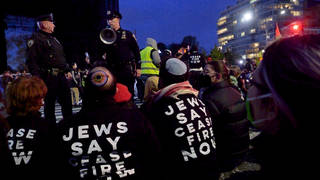
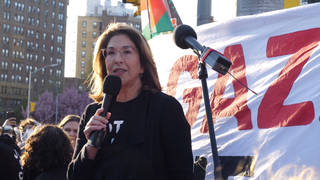
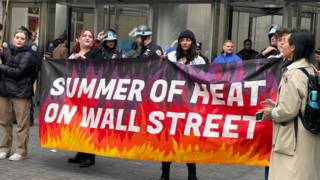
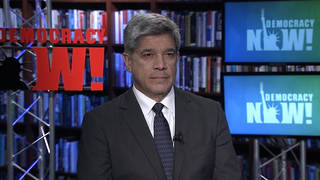





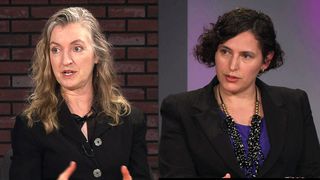
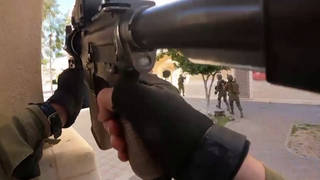
Media Options